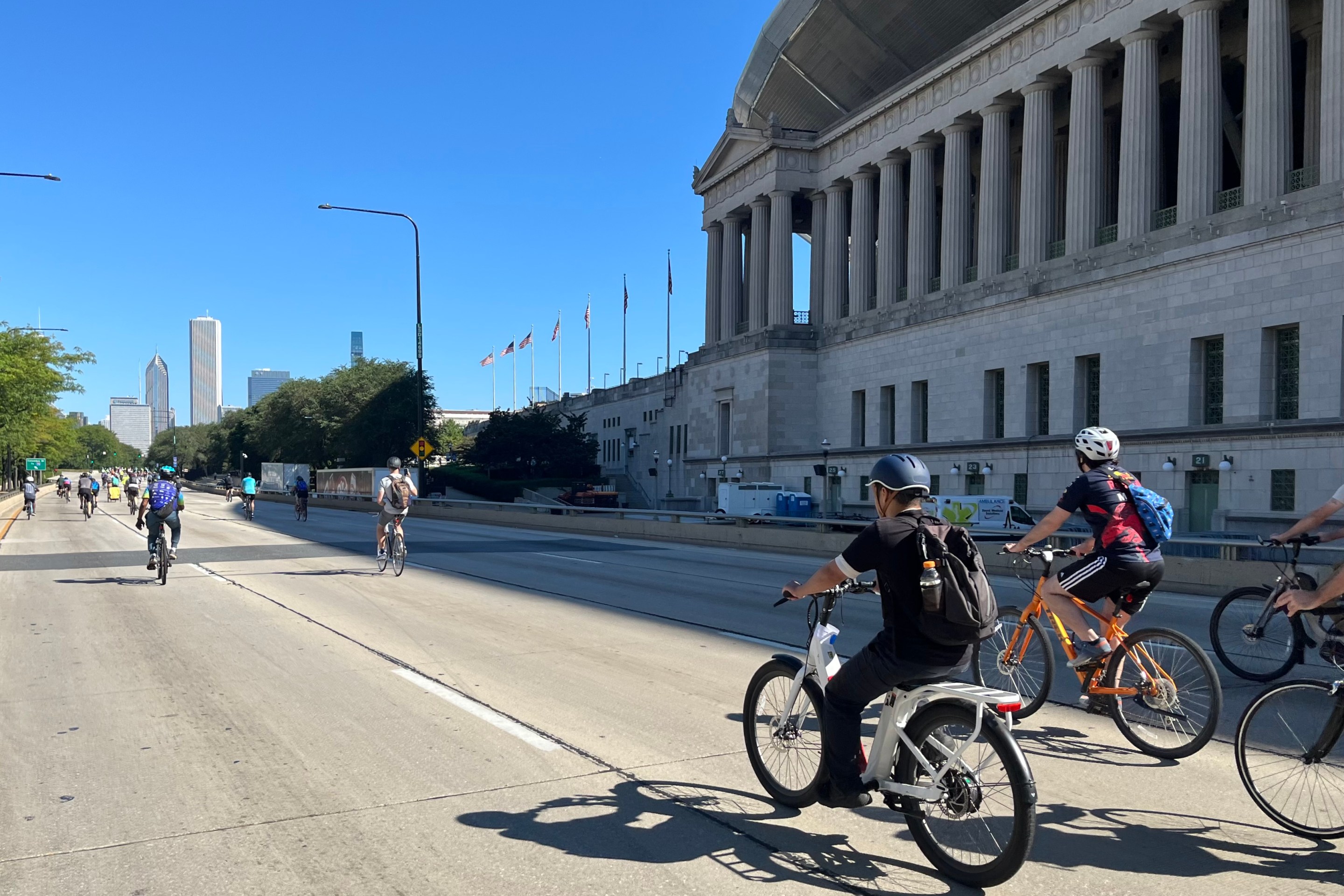On Tuesday, the Regional Transportation Authority hosted the second of four webinars related to the agency’s new “Transit is the Answer” strategic plan. This week’s topic was mobility hubs—transportation nodes where several options for getting around are concentrated in one place, usually at train stations or bus stops and include options like bike- and scooter-sharing, even car shares or ride hailing services. The RTA has added mobility hubs development to the list of eligible projects for funding and support through their community planning program.
Moderator Robert Morris, senior analyst at RTA, introduced three guest speakers to present on their work with mobility hubs: Meredith Klekotka of Metro Transit in the twin cities; Olatunji Oboi Reed, president and CEO of Equiticity in Chicago; and Benjie de la Peña, CEO of the Chicago-based Shared-Use Mobility Center, which consults on shared, multi-modal transportation projects across the country.
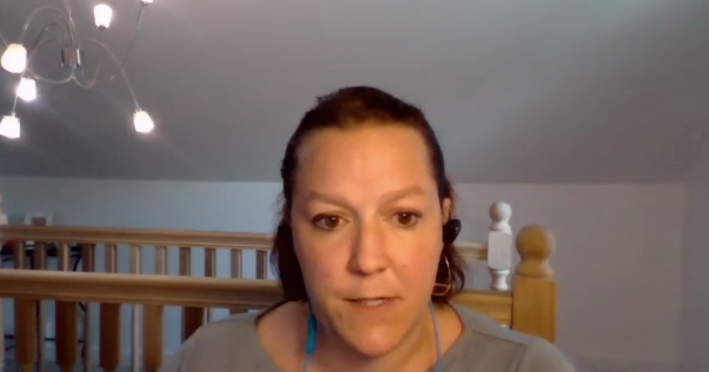
Klekotka presented on a set of guidelines Metro Transit helped develop for how to plan, design and build mobility hubs according to the needs of an area. She then gave an overview of the Minneapolis mobility hub pilot project launched in 2019. Over the course of three years, the city co-located mobility options around transit stops in fourteen neighborhoods. Klekotka said the biggest challenge of the project was tracking and evaluating how people used the hubs to run errands or make other stops en route to their destinations, referred by planners as trip chaining.
According to Klekotka, a big success of the pilot was the presence of neighborhood ambassadors at the hubs—people from the neighborhood who could provide information, assistance and serve as additional eyes on the street. She said Metro Transit is now working on a regional mobility hub pilot to connect the city and suburbs including non-profit car sharing services, a process she described as “complicated financially and legally” but important for first- and last-mile connections in areas without public transportation.
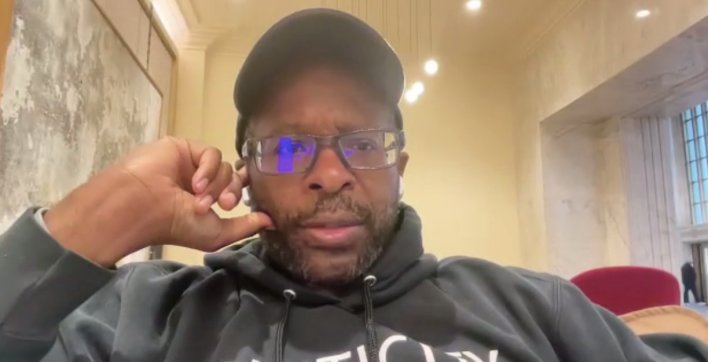
Next, Oboi Reed spoke about The Go Hub, Equiticity’s mobility hub envisioned for the North Lawndale neighborhood. Reed emphasized the importance of social connection at The Go Hub—what he referred to as “software” in conjunction with the “hardware” of mobility devices and infrastructure: advocacy, education, behavioral health services, and group “mobility rituals” organized by Equiticity like bike rides, walking tours and scooter rolls. Reed said The Go Hub building will include a welcome center, bike repair station, and provide gathering, classroom and arts space, and be owned by the community—that the hub would serve as an economic engine as well as public service.
Equiticity is currently pursuing control of the site and fundraising for the project, which Reed estimates will cost $7-10M to build and $2M per year to maintain. He hopes to see The Go Hub open in three to four years.
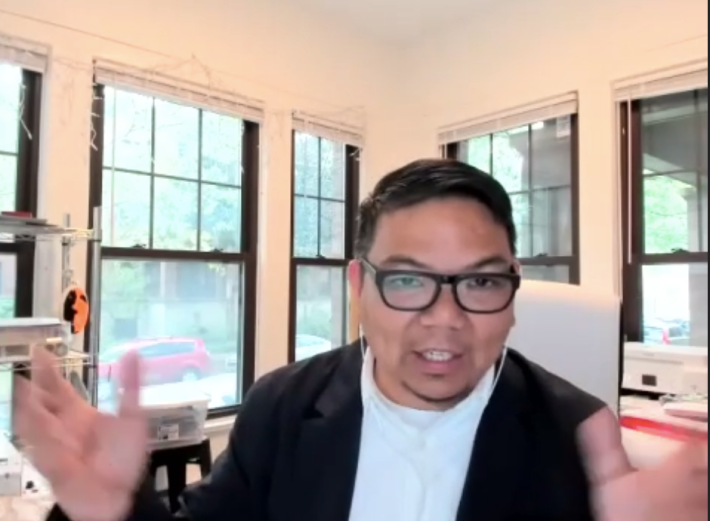
Finally, Benjie de la Peña gave a quick overview of SUMC’s work, which includes advising Equiticity on The Go Hub—or, de la Peña said, serving as “cheerleaders for their work” because the organization is doing such a great job. After making the case for shared mobility—bike, scooter and car shares—as a means of liberation from private car ownership, de la Peña noted two problems with existing app-based systems: one, that they exclude people without smartphones or internet access and two, there is very little visible infrastructure for shared mobility devices to keep them front-of-mind as a viable transportation option. He said mobility hubs provide “infrastructure of choices” and, because they can be developed around bus stops, can be relatively fast and cheap to build.
De la Peña also pointed out that women and care givers do the most trip chaining and noted the inequity of hub-and-spoke train systems like Chicagoland’s CTA and Metra, which serve downtown commuters but force other cross-town travelers to transfer across multiple bus and train lines, which takes more time. He shared a map showing how a smattering of small mobility hubs could connect underserved neighborhoods more quickly and cheaply than a massive infrastructural undertaking like a Circle “L” line, which, wonderful as it would be, is unlikely to be built any time soon.
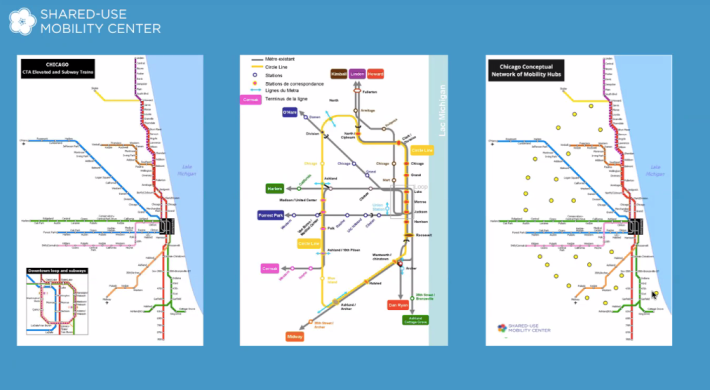
The final minutes were opened to audience Q & A. One question was about the relationship between transit-oriented housing developments and mobility hubs. De la Peña said a benefit of mobility hubs is that they avoid the gentrifying “brain damage” of TOD around train stations, that is “the moment you say where the station will be, land prices go up” creating barriers to affordable housing. Because mobility hubs can be modest in size, located by a bus stop near a public amenity like a library, housing developments are likely to be attracted on a smaller and more gradual scale.
When asked about the barriers to developing mobility hubs, all three panelists cited funding. De la Peña said a big issue was having to cobble together funding from multiple sources, and a lack of public dollars for ongoing maintenance and general operating costs once a hub is built. He cited London’s congestion pricing for cars as a sustainable method for funding public transportation services.
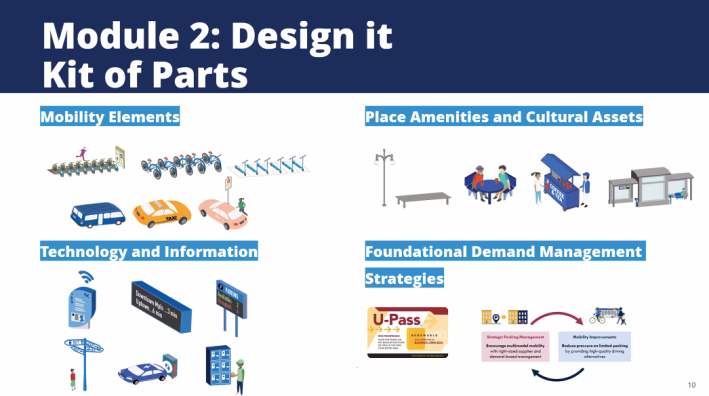
Reed said he would like to see more community-led projects instead of turning to agencies to handle all planning and implementation. “These projects will do a better job of addressing our needs when [community-based organizations] drive it,” he said. “It’s critical we’re thinking about these as models to reduce violence, including police violence and vehicular violence.”
The final question was about improving digital access to mobility hub resources for people with disabilities. De la Peña said that hubs should be staffed by attendants who can assist all travelers. Klekotka pointed to Seattle’s no-platform, no-curb hub along with integration of audio software to provide information to people who are visually impaired.
Join RTA next Tuesday on June 20 for their penultimate Transportation Tuesday webinar exploring the interactions between freight vehicles and public transit, featuring panelists from the Little Village Environmental Justice Organization, Sam Schwartz Engineering, CDOT, and Pace. Register here.

